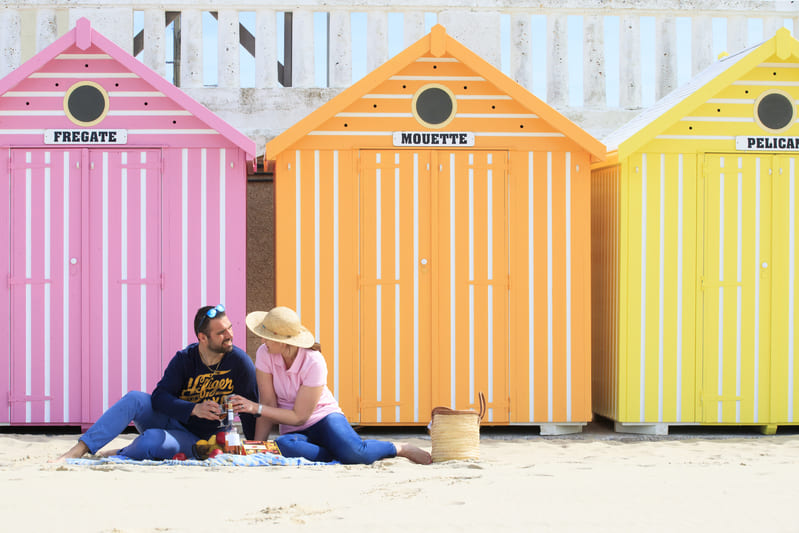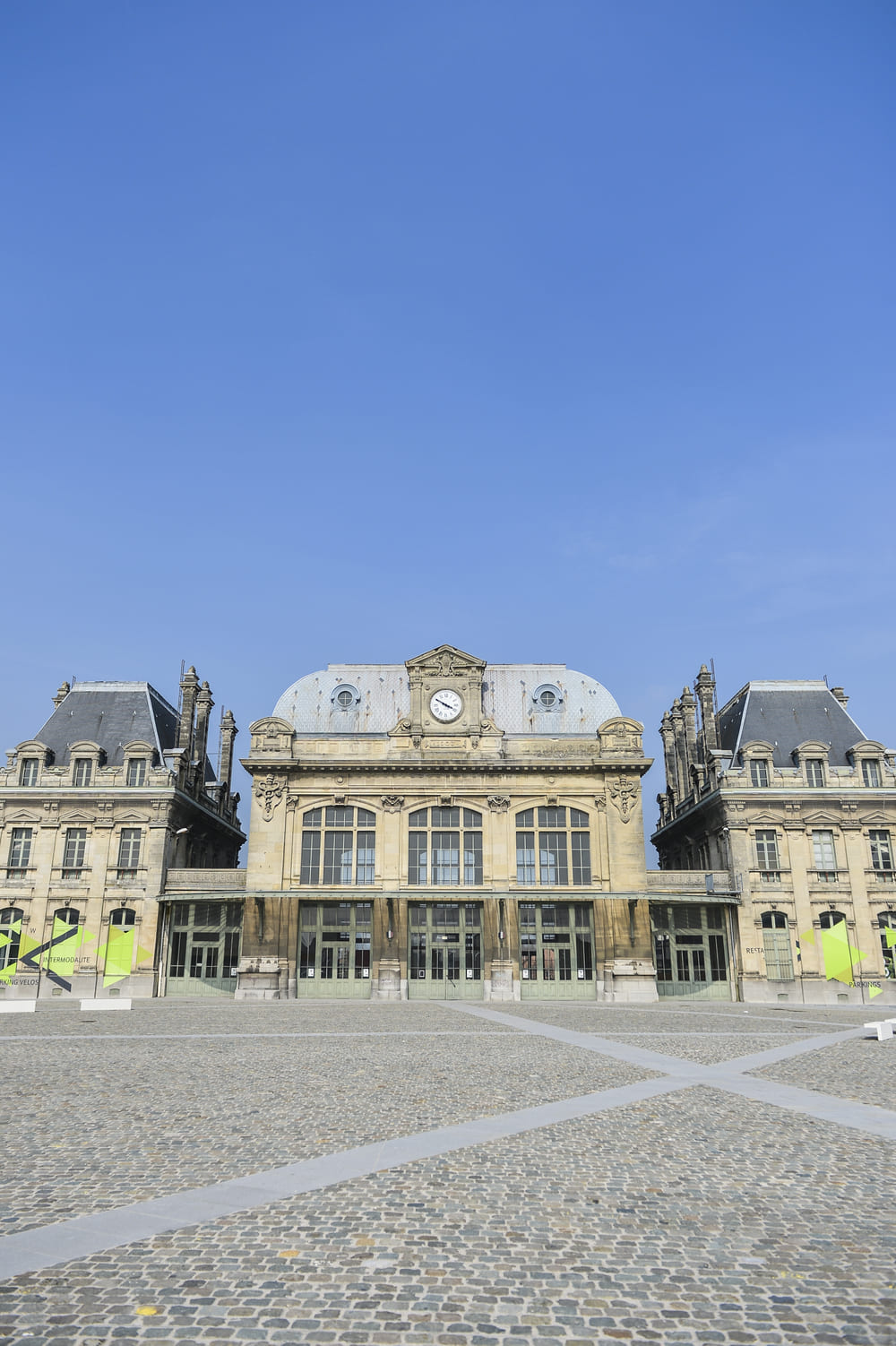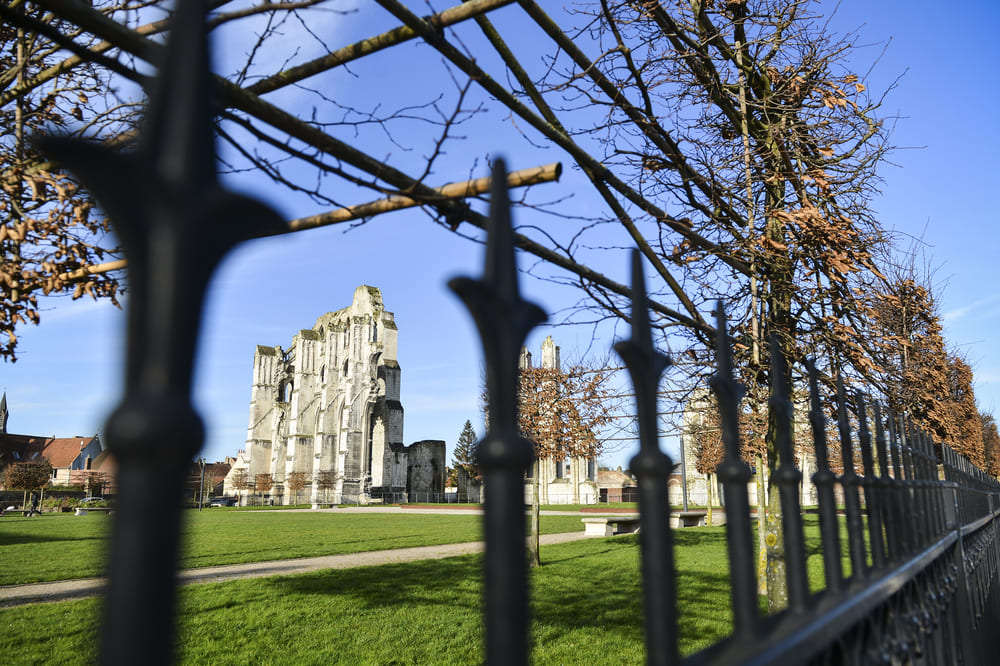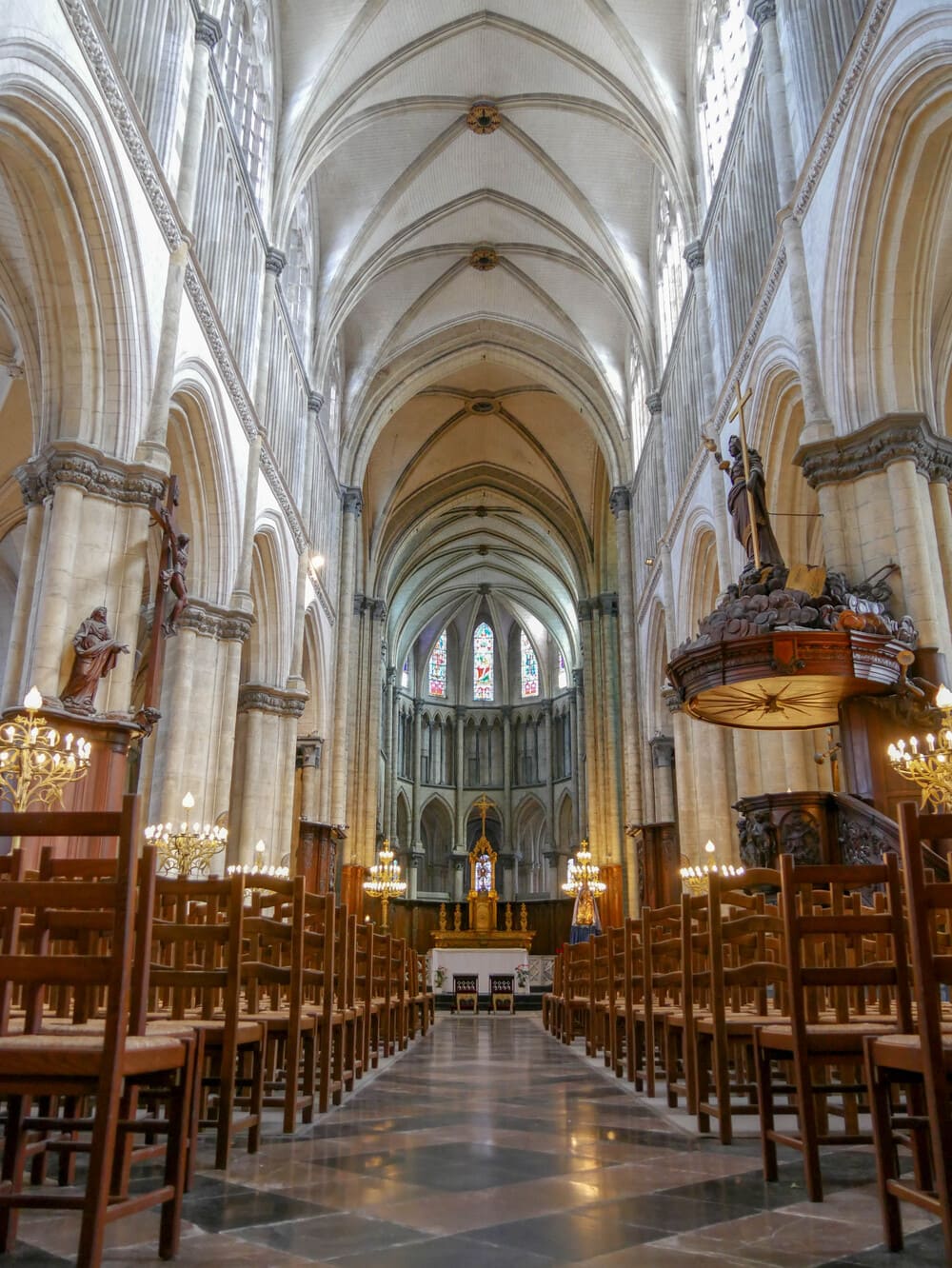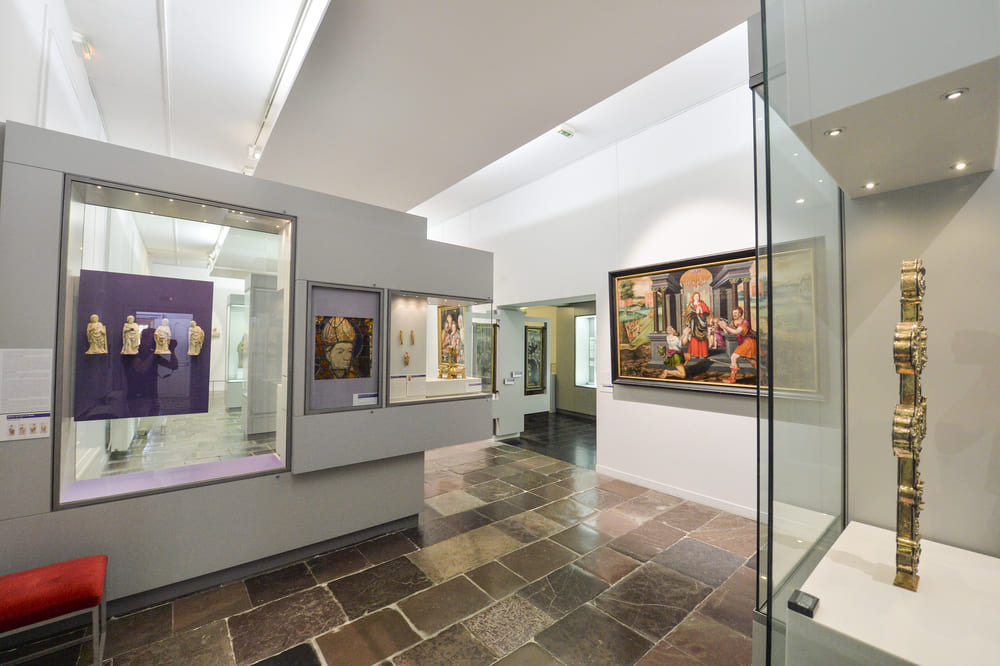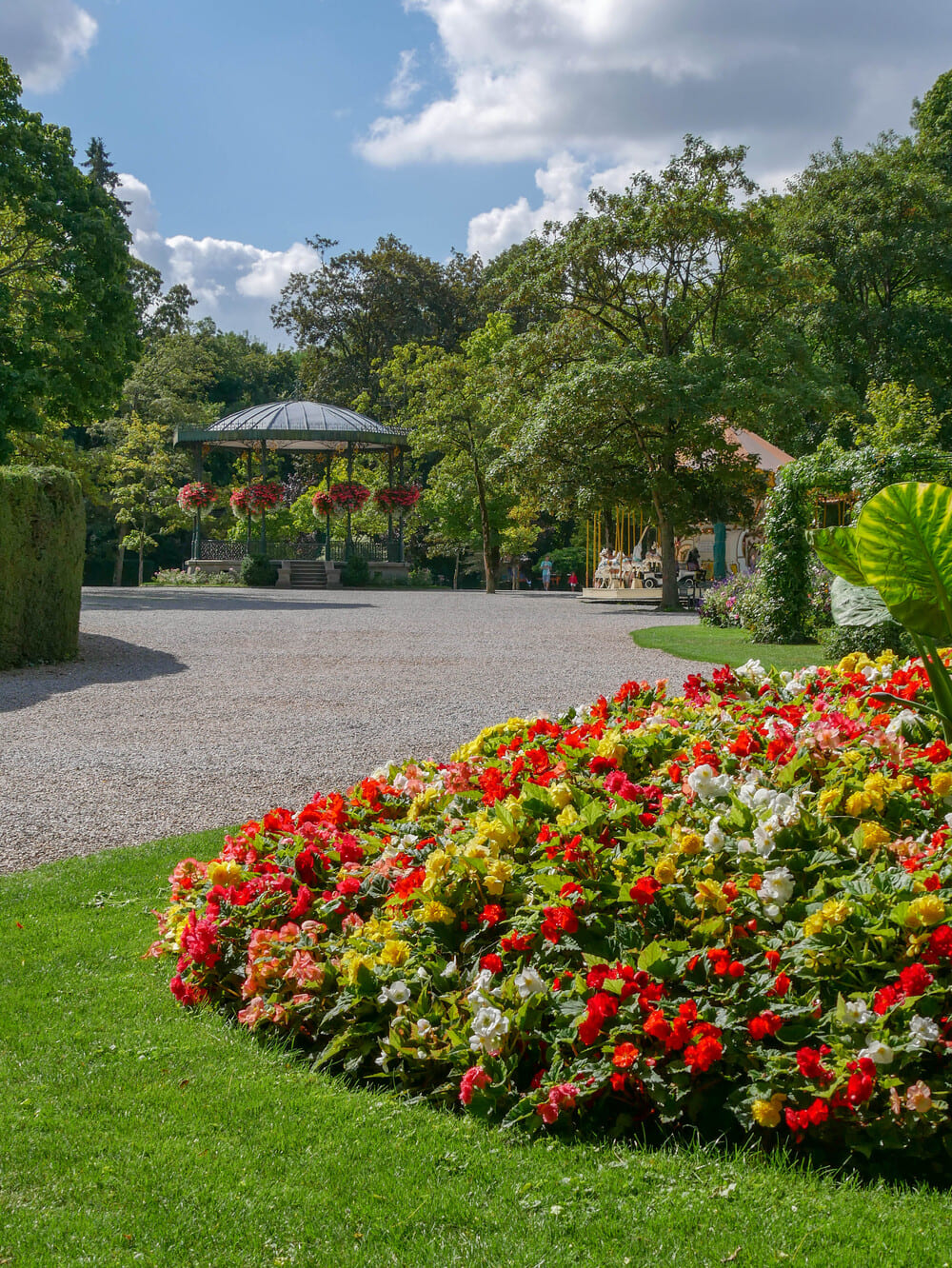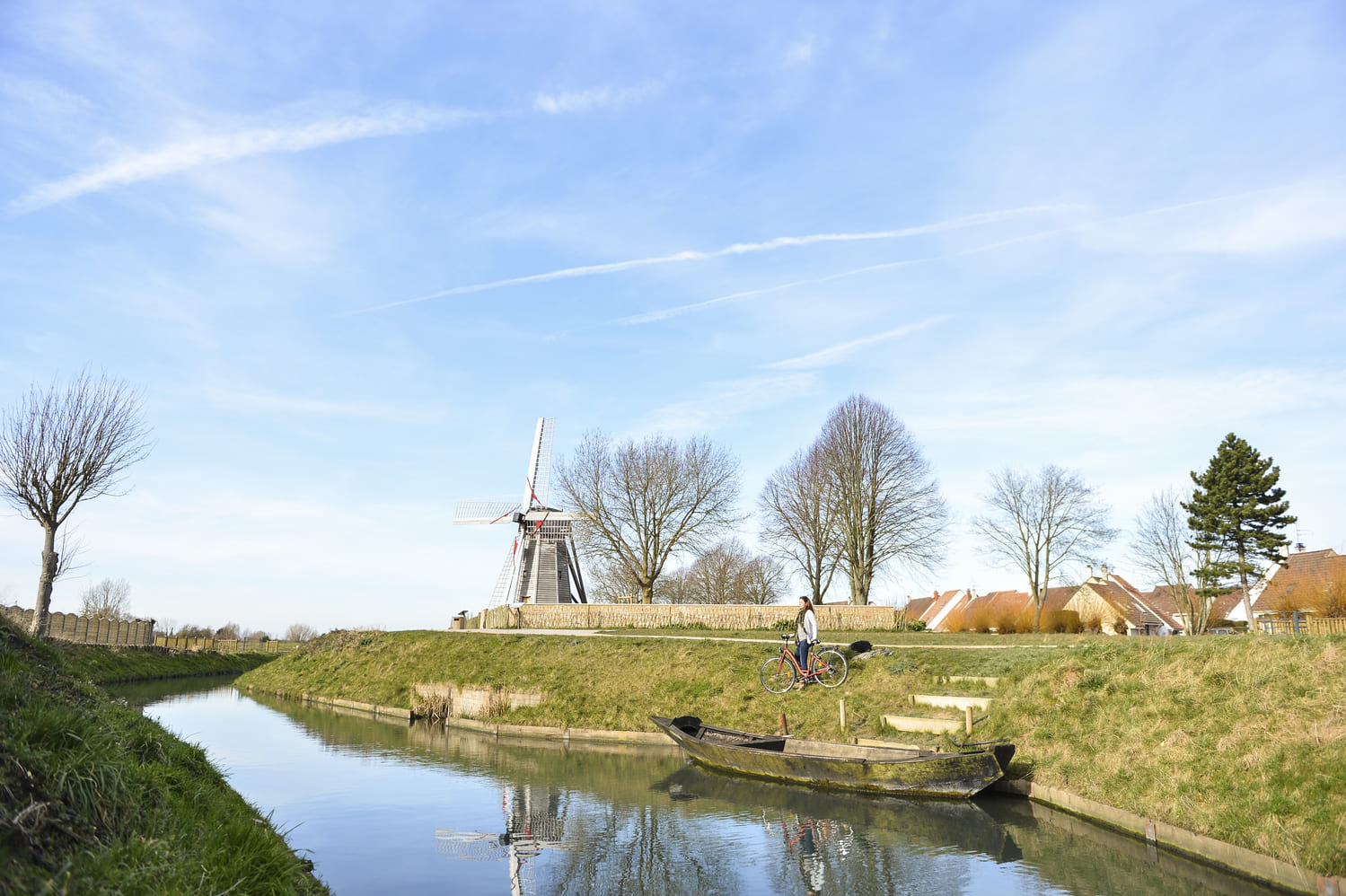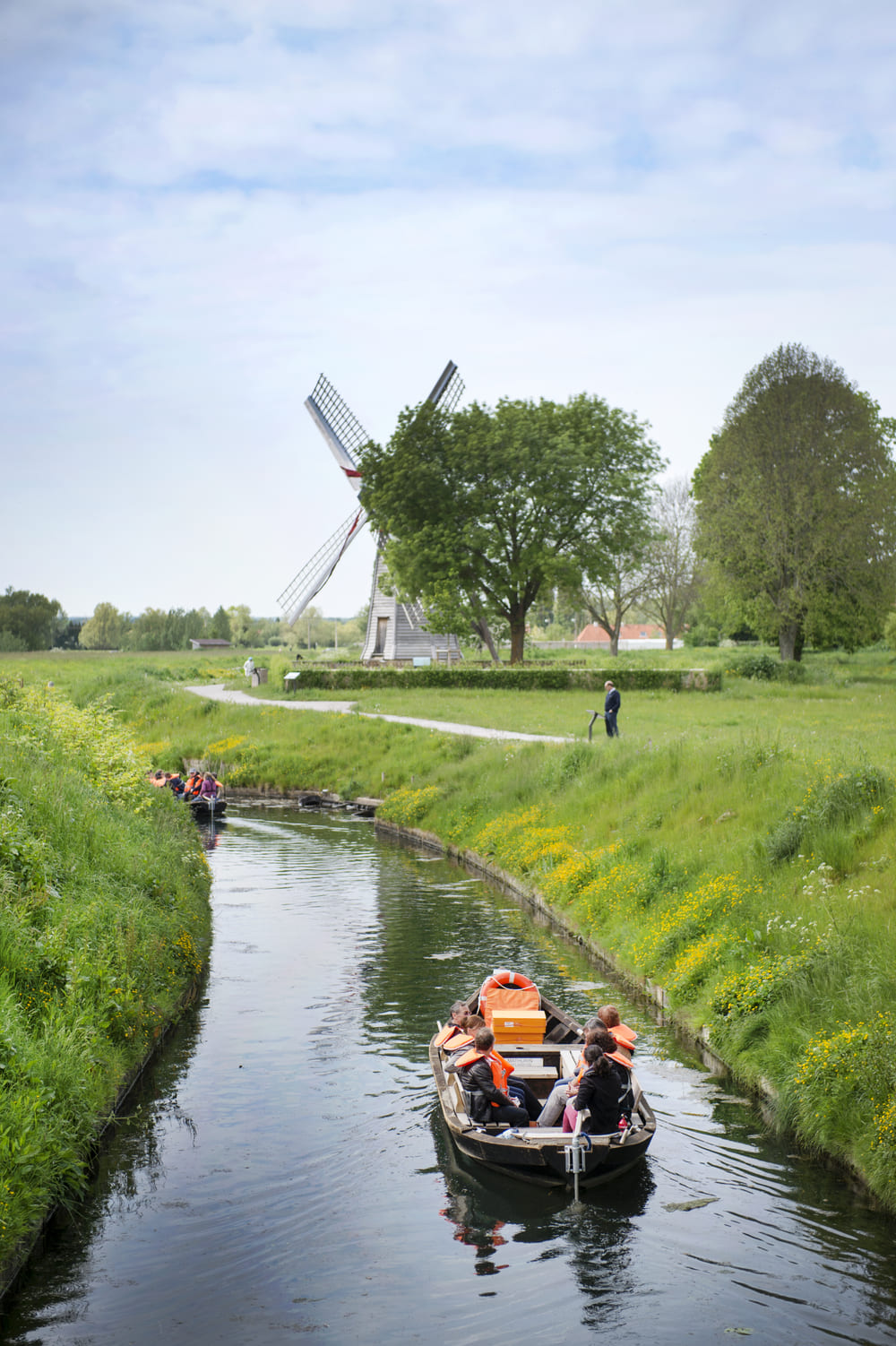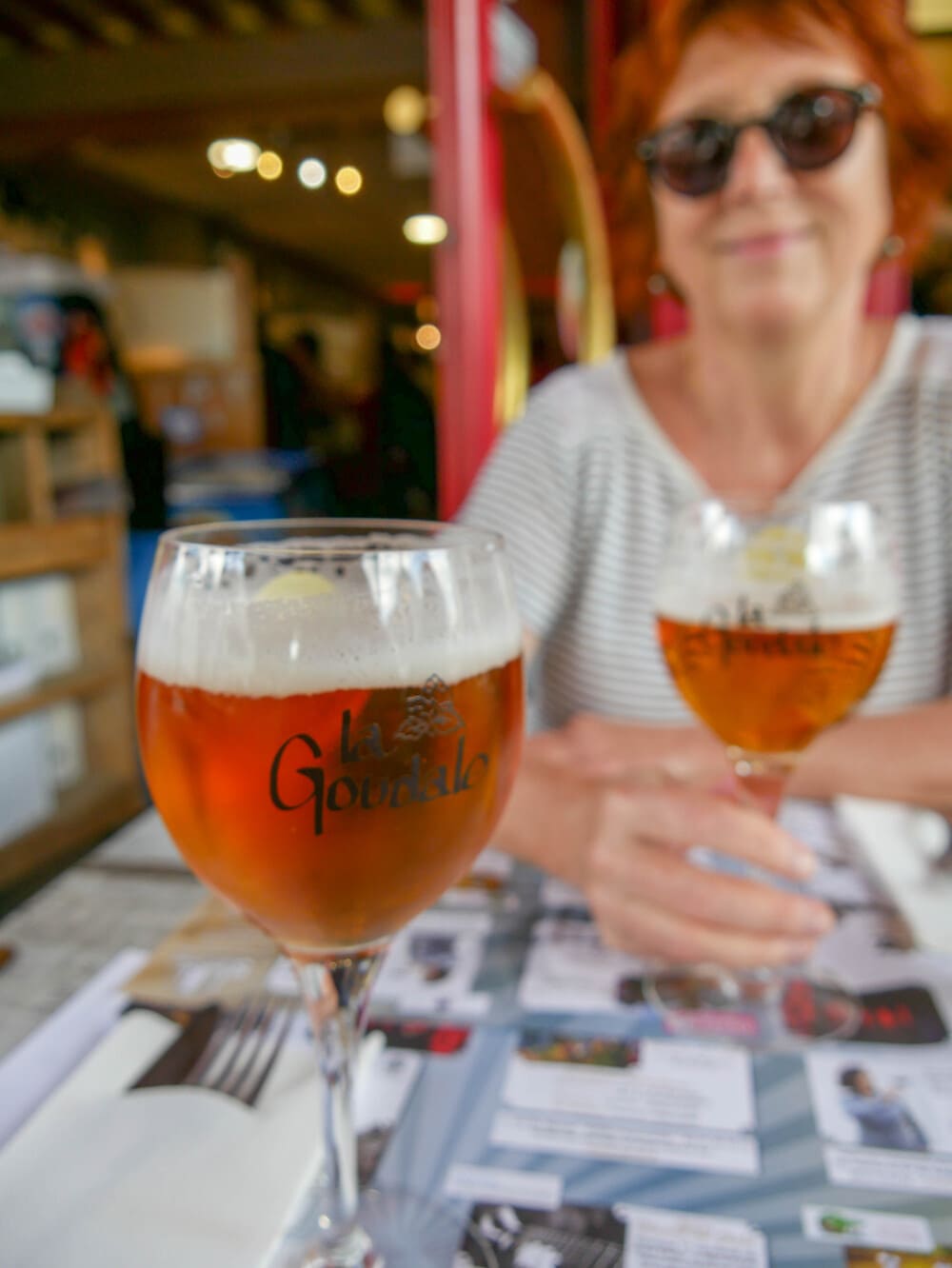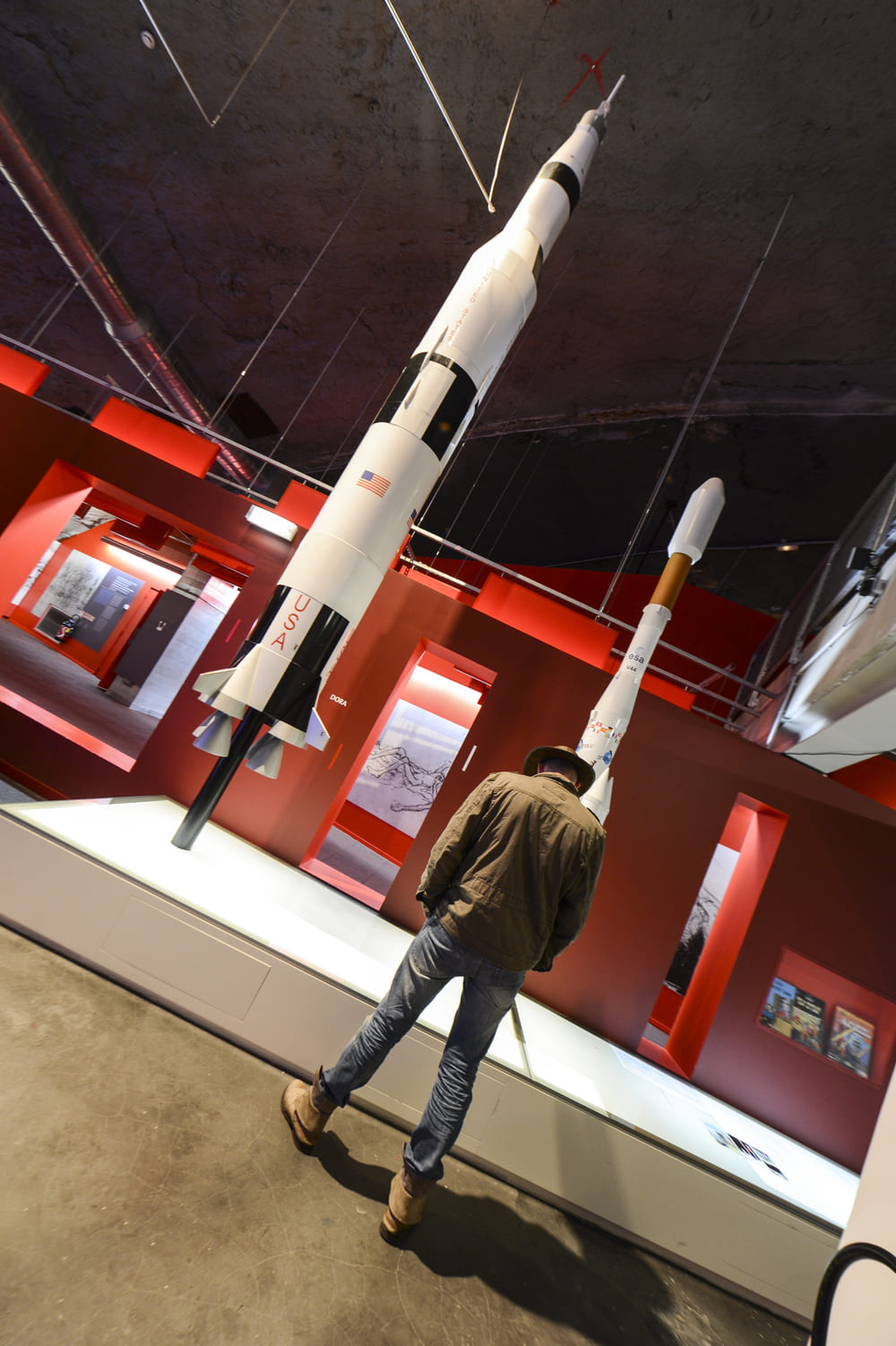Saint-Omer, home to magnificent abbey and much more
Saint-Omer is a quiet, unassuming but genuinely charming little town in the Pas-de-Calais department. Just a 40-minute drive inland from Calais, and easily reached by rail from both Calais and Lille, it was once home to one of the most important abbeys in northern Europe, and is surrounded by the sprawling, watery world of the Marais Audomarois, a Ramsar-listed wetland of international importance. With a magnificent cathedral, as well as several other very worthwhile monuments to visit – not to mention some excellent restaurants where you can enjoy local specialties like carbonnade or Welsch, delicious produce from local market gardens, and artisan beers from a panoply of regional brewers – Saint-Omer makes for a rewarding and memorable place to spend a few of days while exploring the town and its beautiful surroundings.
Iconic visits in Saint-Omer
Saint-Omer Railway Station
Saint-Omer boasts an unexpectedly grand railway station for a town of its size. Opened in 1904, it was designed by the architect Clément Ligny, and replaced a smaller station built in 1848. Built of high-quality stone from Soignies and Creil (in itself unusual at a time when wrought iron was all the rage), its Neoclassical style and elegant proportions make it look as much like a château as a railway station, and it emerged from renovation looking beautifully spick and span in early 2020.
Travelling by train is definitely the best way to arrive in Saint-Omer, not just because of the impressive station, but because it gives an unrivalled preview of the surrounding landscape of the Marais Audomarois.
Place Foch
Place Foch, Saint-Omer’s main square, is home to its colourful weekly market, and is surrounded by restaurants, cafés and bars, which continue along the narrow pedestrianised Rue Louis Martel. At one end of the square stands the elegantly proportioned Town Hall, built using stone from the dismantled Abbey of Saint-Bertin, and containing a rather fabulous little 19th-century theatre.
St Omer Railway Station © Yannick Cadart-CD62
Saint-Omer, the ruins of one of Europe’s great abbeys
Saint-Bertin Abbey – Saint Omer © Yannick Cadart-CD62
Abbey of Saint-Bertin
The gaunt ruins of the once great Benedictine Abbey of Saint-Bertin (Abbaye Saint-Bertin) stand at the lower end of Rue Saint-Bertain, near the banks of the River Aa, the course of which has shifted over the centuries. Founded in the 7th century by St Audomar – these days better known as St Omer, after whom the town is named – it was rebuilt several times and in the Middle Ages grew to be one of the most important abbeys in northern Europe. The abbey went into decline in the 15th century, and was closed in the Revolution, finally being demolished in 1830, with its stone being reused in new buildings, including the Town Hall. Standing in front of the ruins of the Abbey of Saint-Bertin, is a statue of Suger (circa 1081–1151), the 12th Abbot of the Basilica of Saint-Denis in Paris. The monumental statue is the work of the sculptor Jean-Baptiste Stouf, and was one of a dozen statues of historical figures installed at Versailles in the 19th century. In 1931 these were dispersed to the respective birthplaces of their subjects (Suger is thought to have been born in Saint-Omer).
Jesuit Chapel
The Jesuit Chapel (Chapelle des Jesuites) stands on Rue du Lycée, its elegant four-tiered façade in red brick and stone rising up above the surrounding rooftops. The Walloon Jesuits founded a college here in 1556, with the chapel itself being built between 1615 and 1640 by the Jesuit architect Jean du Blocq (1583–1656), who also supervised work on the Cathedral of Notre-Dame in Luxembourg. The building is a mixture of local Gothic and Italianate styles – the carefully ordered façade and portal, for example, show the influence of the Italian architect Serlio (who worked on the palace at Fontainebleau), while the ribbed vaults of the interior follow Gothic tradition. However, Blocq’s innovative design abandons the usual transept, giving the interior a feeling of more unified space, while details such as the triglyphs (three vertical lines) and bucranes (ox skulls) are drawn from ancient Greek and Roman architecture.
Theatre
Hidden away within the Town Hall, Saint-Omer’s small, Italianate theatre follows the style of theatres in 17th-century Venice. Opened in 1840, it is lavishly decorated, with elaborate stucco, gilded balconies, a painted trompe l’oeil ceiling and pink marble columns. It was re-opened in 2018 after extensive renovation, having been closed to the public for the previous 45 years, and can be visited with a guide.
Motte and Bailey Castle
Beside the cathedral, hidden within a ring of houses, lies a motte and bailey castle. This was the town’s original keep, built in the 10th century but later destroyed and replaced with the present brick structure in the 18th century. During WW1 it was used as the British Army headquarters.
Cathedral of Notre-Dame
Saint-Omer’s Cathedral of Notre-Dame (Cathédrale Notre-Dame) was founded in the 7th century, on the site of a Temple of Jupiter. The first building was replaced by a Romanesque church in the 11th century, and this was in turn gradually replaced by the present Gothic structure between the 12th and 16th centuries. The length of this reconstruction – some four centuries – means that the cathedral encompasses all the different stylistic phases of French Gothic architecture, from Early Gothic (visible in the plan of the choir), to Flamboyant Gothic (seen in the north transept, built in the second half of the 15th century). The main façade is unusual in that unlike most French cathedrals of this period it is not flanked by twin towers, while an unusual feature inside are the chapels slanted at an angle of 45 degrees. The interior includes a beautifully sculpted cenotaph of Saint-Omer (who was buried here), an enormous Descent from the Cross by Rubens, and a magnificent astrolabe dating from 1558. The huge organ is the work of the 19th-century French master, Aristide Cavaillé-Coll, who is widely regarded as the greatest organ-builder of his time.
St Omer Cathedral © A.Chaput Pas-de-Calais Tourisme
Musee Sandelin – St Omer © Yannick Cadart-CD62
Sandelin Museum
Located in a beautiful 18th-century townhouse near the top of Rue Carnot, the Sandelin Museum (Musée de l’hôtel Sandelin) contains over 3,000 artworks, which span a period from the Middle Ages to the 19th century. This is the place to see fragments of sculpture from the now ruined Abbey of Saint-Bertin, breathtaking religious art from the Medieval and Renaissance periods, and there’s an exceptionally fine ceramic collection, with some 750 pieces from Europe and Asia. The house has exquisite Rococo interiors and was built for Pierre and Marie-Josephe Sandelin, the Count and Countess of Fruges. It opened as a museum in 1904.
Public Garden – St Omer © A.Chaput Pas-de-Calais Tourisme
Jardin Public
Saint-Omer’s beautifully lush and peaceful public gardens (Jardin Public) lie hidden behind a wall, just across the road from the cathedral – you can enter through a small alley here, or through the main entrance just off Place Foch. Completed in 1898, it includes an orderly French garden with a fountain, an English garden with a small pond, and an arboretum.
Explore by boat the marshes
of Saint-Omer
Marais Audomarois
More than anything else, it is the vast wetlands – the Marais Audomarois – which define the town and its surrounding landscape, and which have shaped its history. These extraordinary wetlands, which cover an area of over 3,700 hectares, are a patchwork of watercourses (some 700km of them!), lakes and market gardens. They were formed over the centuries, through land reclamation by monks from the Abbey of Saint-Bertin, who dug peat beds and drainage channels, and built-up fertile areas for cultivation in between. Listed as a Ramsar site (Wetland of International Importance), a Unesco Biosphere Reserve and a Natura 2000 site, they provide an amazingly rich habitat for plants and animals, including over 230 species of bird. For birdwatching, the best area is the Romelaere nature reserve. The best way to explore the Marais Audomarois is by boat – tours in a bacôve, the traditional local wooden boat, are offered by ISNOR, Les Faiseurs de Bateaux, and also run from the Maison du Marais.
Maison du Marais – Windmill © Yannick Cadart-CD62
Maison du Marais – Windmill © Yannick Cadart-CD62
La Maison du Marais
The Maison du Marais is the best place to learn more about the town’s watery surroundings – its history, legends, wildlife and plants – before you set off to explore them by boat, by bike or on foot. It takes about an hour to walk through the exhibition (newly refurbished in 2020), with audio commentaries and interactive displays. Boat tours run from outside the Maison, and you can hire bikes here as well.
Les Faiseurs de Bateaux
There are two types of traditional wooden boat associated with the Marais Audomarois, the bâcove and the smaller escute, which until the arrival of roads were the primary means of transport on the wetlands. These days there is only one workshop which still makes these traditional boats, Les Faiseurs de Bateaux, run by Rémy Colin. Visits to the workshop are possible, and Rémy also runs boat tours on the Marais Audomarois.
Shopping and Gastronomy
Fine beers and cheese are on the menu in Saint-Omer
Saint-Omer’s surroundings are home to plenty of mouth-watering cheeses, including the deliciously earthy Maroilles, with its characteristic reddish rind, and the wonderfully tasty Mimolette. For the finest cheeses in town, head to À la ferme audomaroise, on Rue Louis Martel.
The Pas-de-Calais region also has a long history of beer brewing, with a particularly large number of small craft breweries, such as Page 24 near Arras and 2 Caps in Wimereux, as well as the larger Brasserie de Saint-Omer in Saint-Omer itself, which brews La Goudale. A great place to try some local beers is Taverne de Duchenot, on Place Pierre Bonhomme, and there’s a good selection of beers at the bar of the Hotel Ibis too.
The area around Saint-Omer is still cultivated by small-scale market gardeners, as it has been for centuries – the crops most closely associated with the area are cauliflower and endive. To buy some local produce, check out the weekly market, or head out to a local producer.
Saint-Omer’s weekly market takes place on Saturday mornings on Place Foch.
La Goudale © A.Chaput Pas-de-Calais Tourisme
What else
La Coupole © Yannick Cadart-CD62
The Blockhaus at Eperlecques
The Blockhaus at Eperlecques lies hidden away in the forest, around 13km northwest of Saint-Omer. A vast concrete bunker linked by rail to Saint-Omer and Calais, it was built in 1943 as a combined assembly plant and launch site for Hitler’s lethal V2 rocket, until following Allied bombing this activity was moved to La Coupole. There are good, informative displays and audio-visual presentations, and the setting has been left deliberately raw – think cold, harsh concrete – making a visit a fascinating but sobering experience.
La Coupole
Located around 7km south of Saint-Omer, La Coupole is one of the most impressive WW2 sites anywhere in France. Intended as a base for launching V2 rockets, it was built between 1943 and 1944 as a successor to the Blockhaus at Eperlecques, but was abandoned following the D-Day landings. Despite relentless Allied bombing, its massive concrete shell remains intact, and today houses a state-of-the-art History and Memorial Centre, covering the development of the V2 rocket, the horrific suffering of the slave labourers used in the rockets’ construction, and the evolution of space travel (following the end of WW2, the designer of Hitler’s terrifying V2 rocket program was taken to work at NASA). A shuttle bus runs between Saint-Omer railway station and La Coupole.
Les Belles Échappées
Housed in the former abbey farm at Clairmarais, Les Belles Échappées is simply the place to come to hire bikes, e-bikes, a tandem, VW camper vans or a vintage Citroën 2CV to explore the surrounding area.
Les Belles Echappées © Karl Bruninx
More rural towns to visit
Montreuil
Hesdin
Top ten countryside attractions
See, do, eat and more
